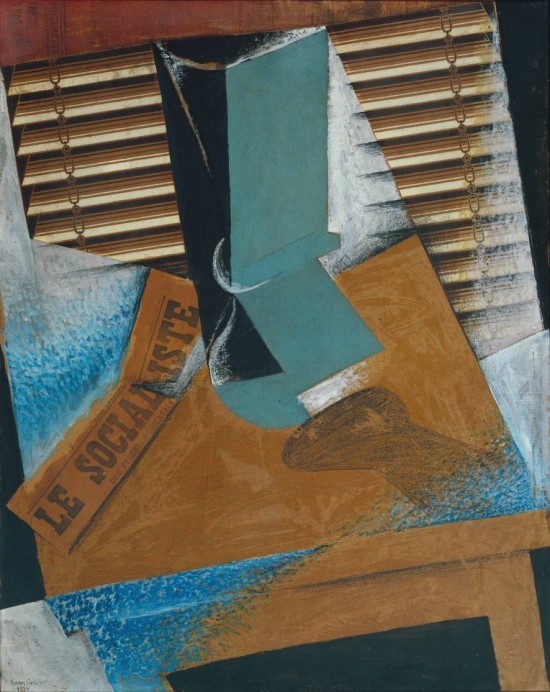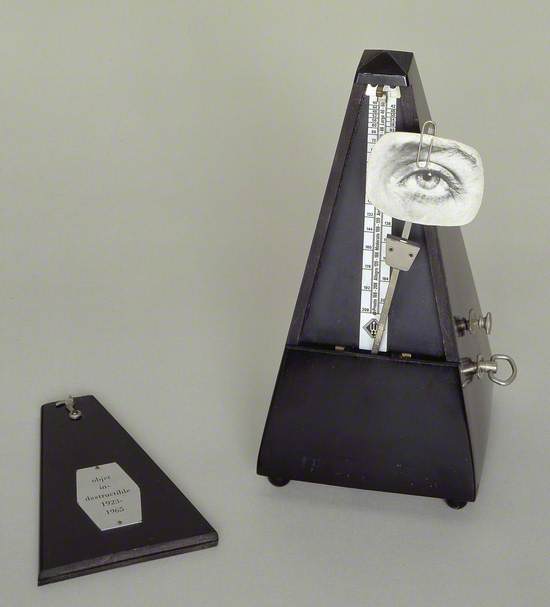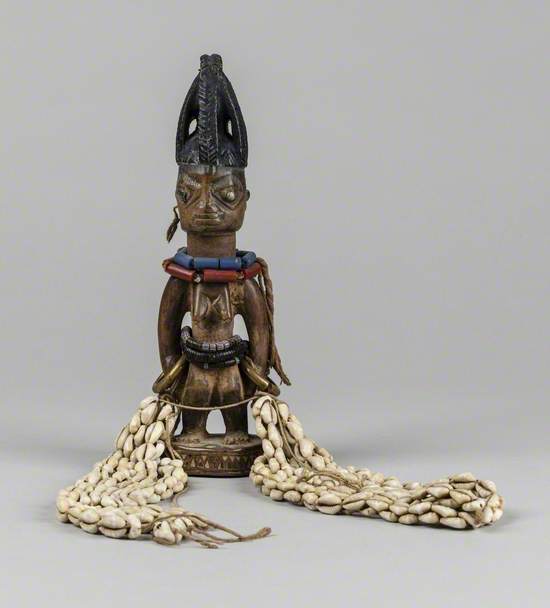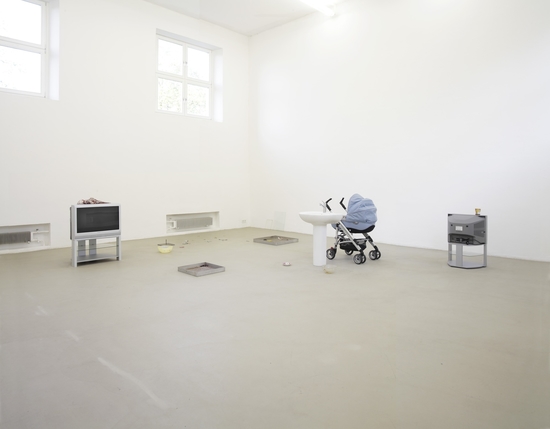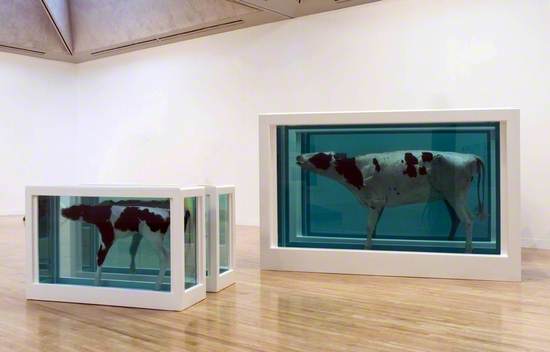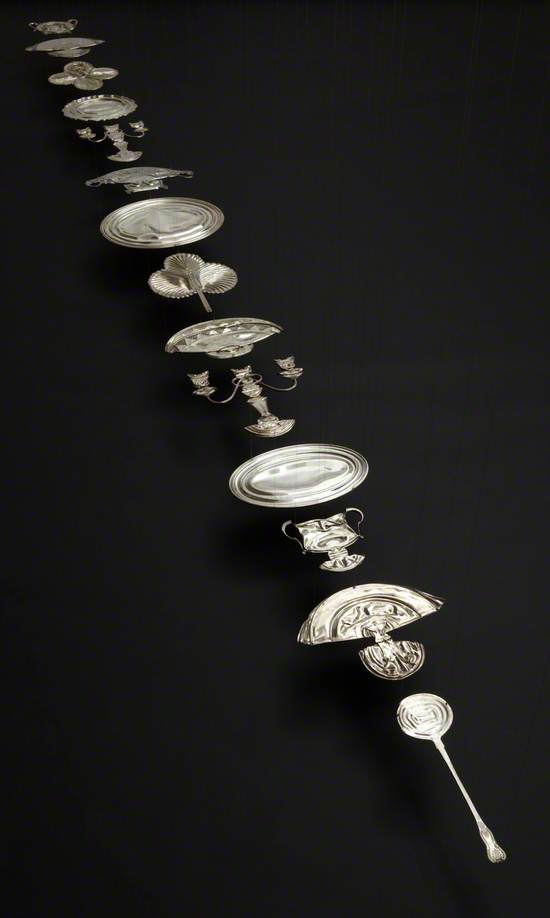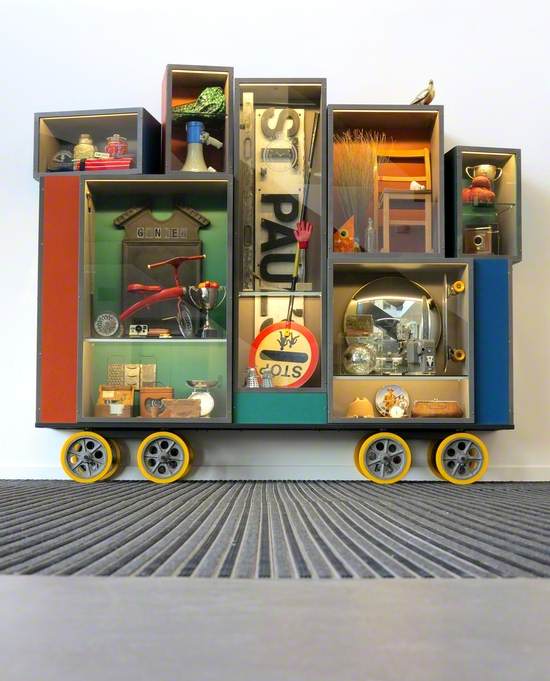Artists sometimes make art from unexpected objects - things we don't think of as art materials that originally had another function or purpose. These objects are called 'found objects'. Found objects can be manufactured, or objects from nature (such as stones, shells or bones). Sometimes they are used without making any changes to them, or an artist may decide to alter an object or use it alongside other materials. Explore some of the ways found objects have been used by artists.
The Sunblind (La Jalouise) 1914
Juan Gris (1887–1927)
Gouache, collage, chalk and charcoal on canvas
H 92.1 x W 72.7 cm
Tate
Man Ray (1890–1976)
Wooden metronome & photograph, black & white, on paper
H 21.5 x W 11 x D 11.5 cm
Tate
unknown artist
Wood, cloth, metal, glass & shells
H 36 x W 25.1 cm
Museum of Archaeology and Anthropology, University of Cambridge
Love 2007
Peter Blake (b.1932)
Enamel, wood, paper & found objects
H 97.8 x W 156.8 x D 10.1 cm
Pallant House Gallery
She's Pregnant Again 2005
Cathy Wilkes (b.1966)
Televisions, aluminium trays, water, petrol, pram, sink, towel, phone, salad bowls, mirror, jar, battery, saucer, shoe, fabric, thread & paintings
Arts Council Collection, Southbank Centre
Mother and Child (Divided) 1993 & 2007
Damien Hirst (b.1965)
Glass, stainless steel, perspex, acrylic paint, cow, calf & formaldehyde solution
Tate
Rorschach (Endless Column III) 2006
Cornelia Parker (b.1956)
14 silver-plated objects crushed by 250-ton industrial press & suspended from wire
H 2.5 x W 426 x D 41 cm
Government Art Collection
Chair 2013
Hayley Tompkins (b.1971)
Acrylic paint & chair readymade
H 81 x W 40 x D 45 cm
Rochdale Arts & Heritage Service
Walldella VI 2007
David Batchelor (b.1955)
20 plastic containers, low energy lights, electric cable & plug
H 177.5 x W 52 x D 28.5 cm
Government Art Collection
The People's Museum of Memory and Myth 2017
Hans K. Clausen (b.1964)
NHS Lothian Charity – Tonic Collection
Explore artists in this Curation
View all 13-
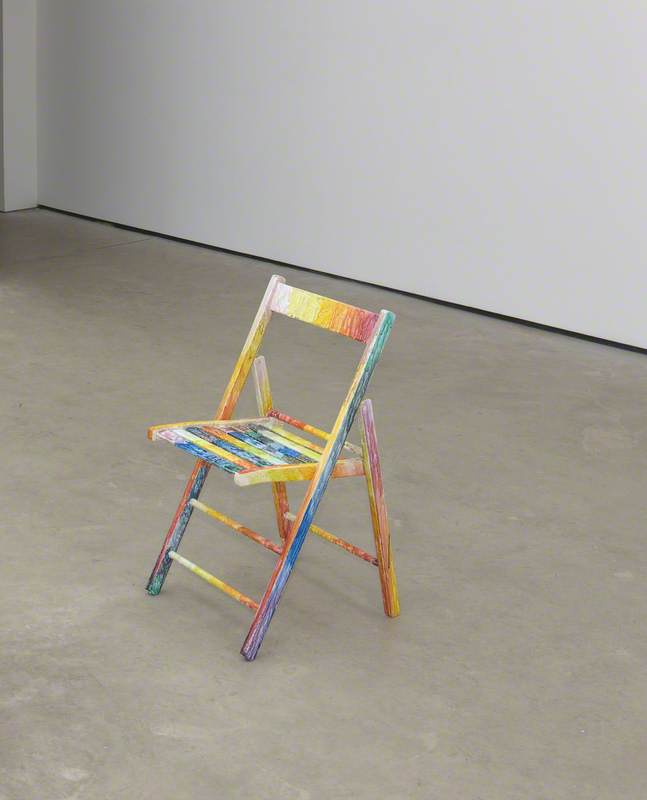 Hayley Tompkins (b.1971)
Hayley Tompkins (b.1971) -
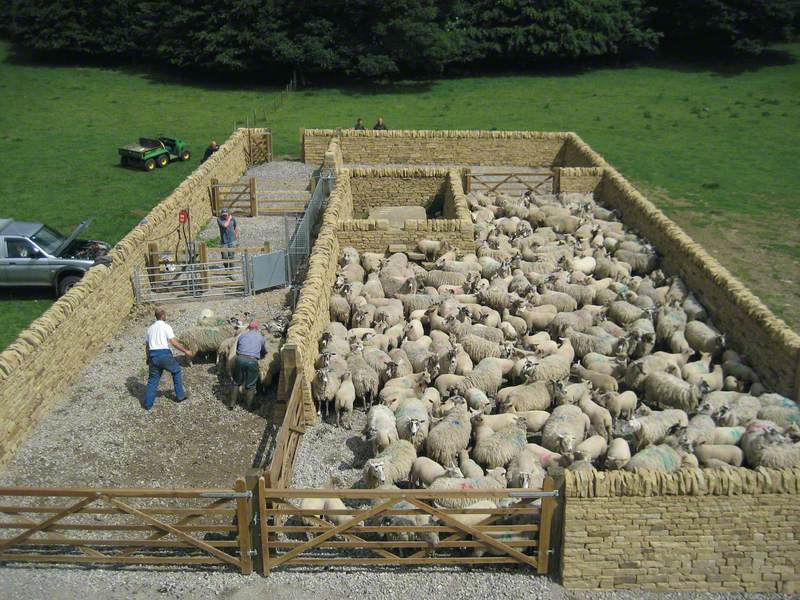 Andy Goldsworthy (b.1956)
Andy Goldsworthy (b.1956) -
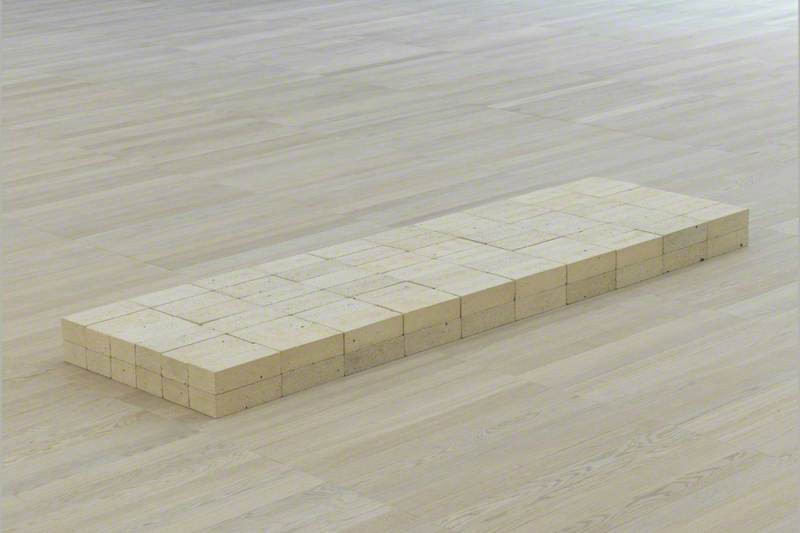 Carl Andre (b.1935)
Carl Andre (b.1935) -
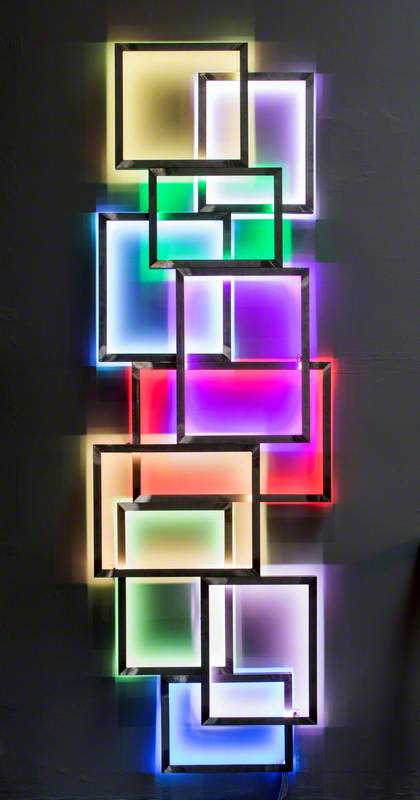 David Batchelor (b.1955)
David Batchelor (b.1955) -
 Hans K. Clausen (b.1964)
Hans K. Clausen (b.1964) -
 Cornelia Parker (b.1956)
Cornelia Parker (b.1956) -
 Marcel Duchamp (1887–1968)
Marcel Duchamp (1887–1968) -
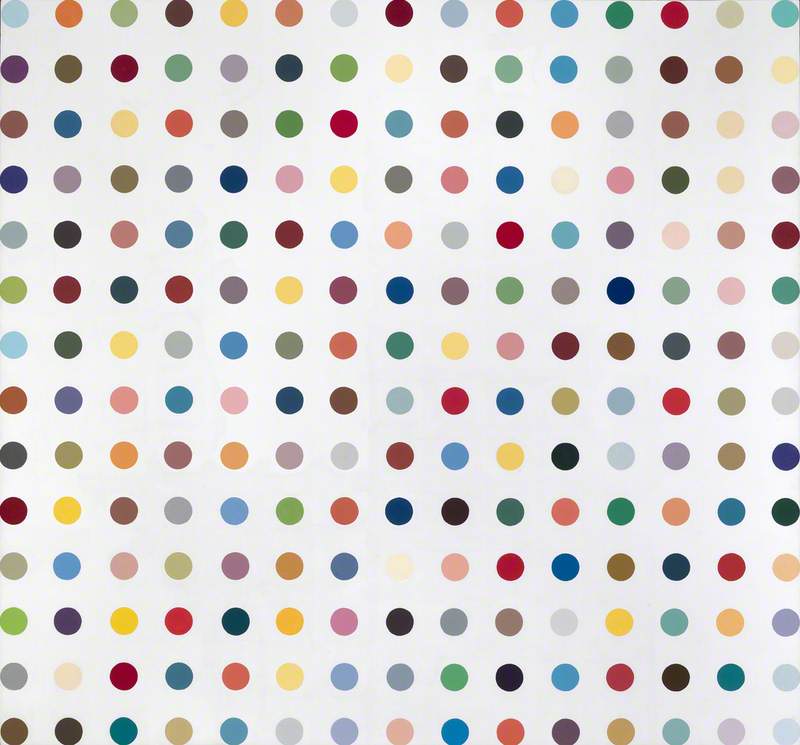 Damien Hirst (b.1965)
Damien Hirst (b.1965) -
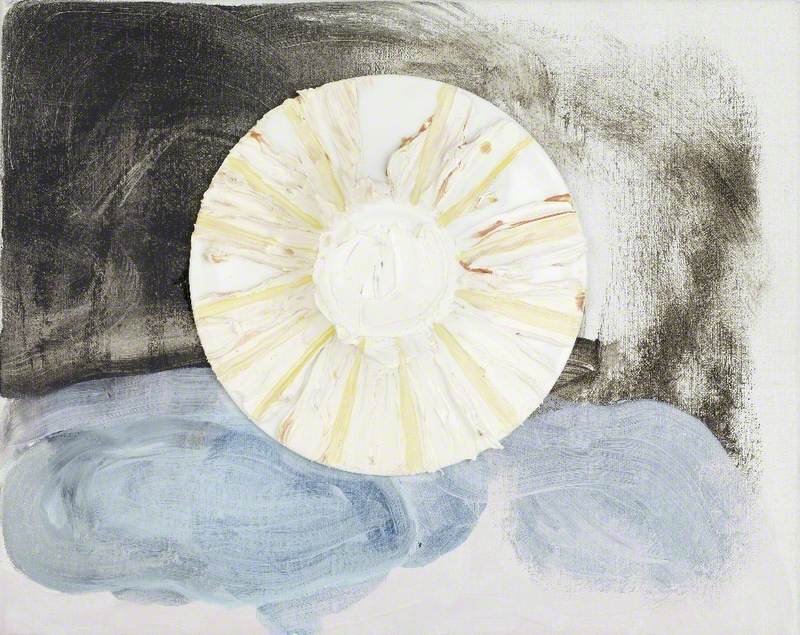 Cathy Wilkes (b.1966)
Cathy Wilkes (b.1966) -
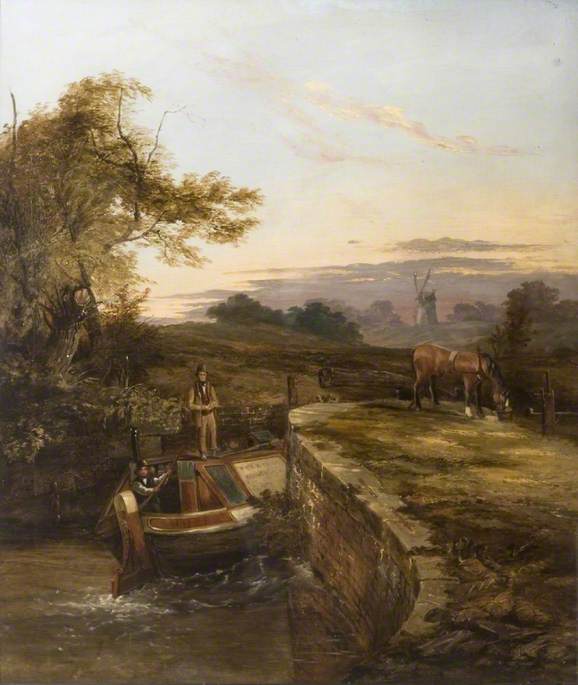 unknown artist
unknown artist - View all 13
